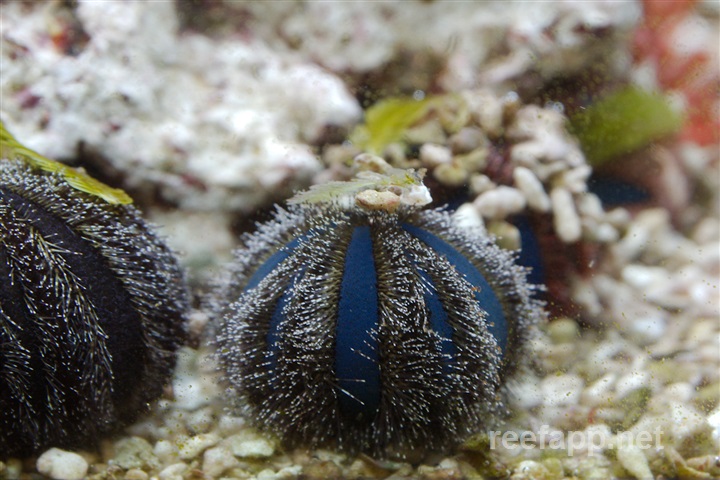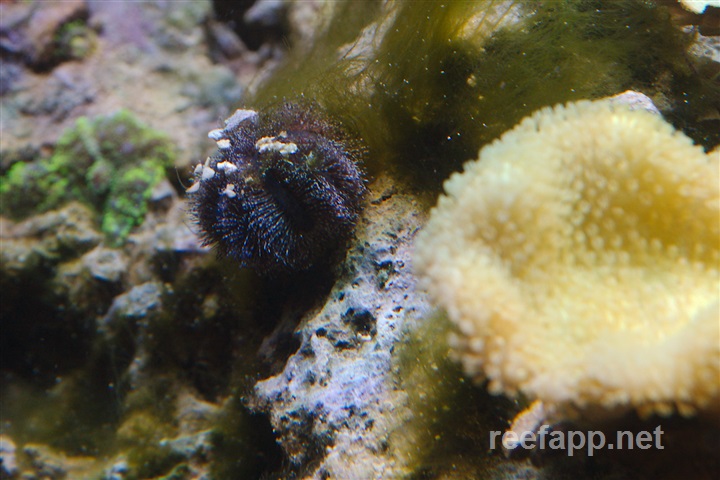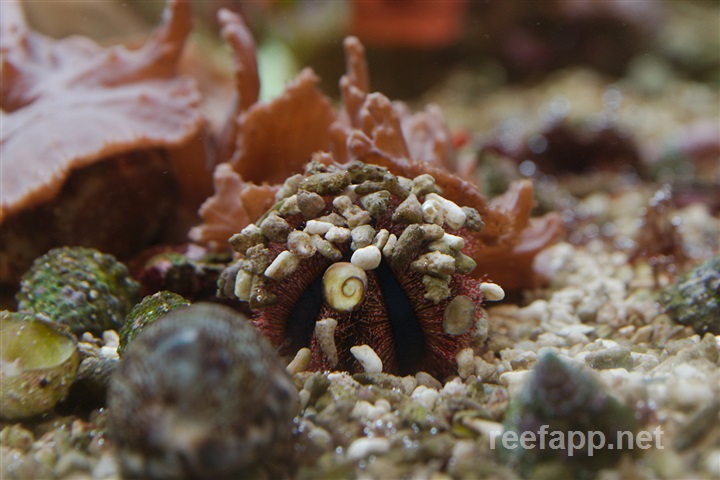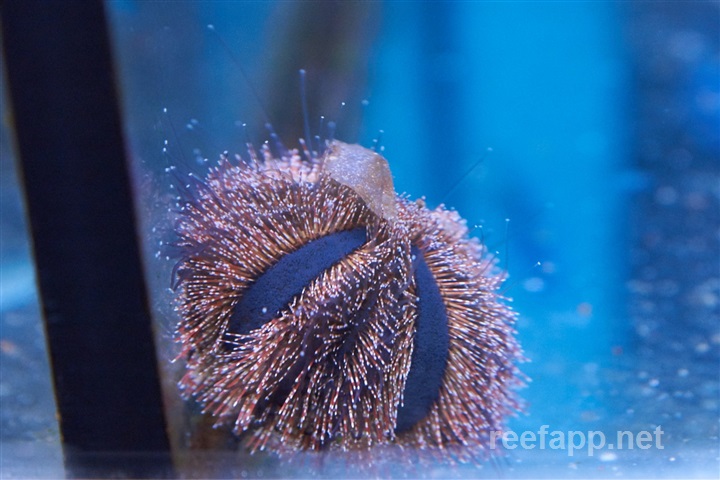Mespilia globulus




| Latin name | Mespilia globulus |
|---|---|
| Local name | Tuxedo Urchin |
| Family | Echinoidea - Mespilia |
| Origin | East Indian Ocean, Japan, Indonesia |
| Max length | 7 cm (2.8") |
| Minimum volume |
150 l (40 gal) |
|---|---|
| Hardiness |
Delicate |
| Suitable for aquarium |
Suitable for most aquarium |
| Reef safe |
Always reef safe |
| Aggressiveness | Peaceful |
| Recommended |
Macroalgea (Eg. seaweed / nori) Microalgea (Eg. spirulina) |
|---|
This species is very sensitive during transportation and acclimatizing into the aquarium.
These fish should be kept in a well run aquarium where they can "graze" algae from rocks and stones.
If there are insufficient algae on the rocks, it is important to feed more frequently and supplement with algae rich food e.g. Spirulina.
This species is nocturnal and therefore the most active when the light is dimmed or turned off.
This species can eat large amounts of algae (relative to their size) from rocks, like green hair algae and filamentous algae.
As it doesn’t eat every algae type, in case of a specific algae plague, find out more precise information.
This sea urchin will decorate itself with whatever is available in the aquarium. This could be for example: Zoa Polyps, but is typically algae, small stones and shells.
This particular sea urchin is less willing to choose coral fragments and the like, than others. They come in multiple colours, red, blue, green and black, among others.
Sea urchins are often used to keep various algae at bay.
They are very effective algae eaters, and will eat anything from coralline algae to green hair algae.
Sea urchins must not be kept in an aquarium with few algae, as they may starve to death.
Sea urchins should be acclimatized slowly, due to sensitivity towards changes in salinity.
Ronald L. Shimek. 2004. Marine Invertebrates (PocketExpert Guide) - TFH Publications / Microcosm Ltd. - (English)
Ronald L. Shimek. 2003. Sea Urchins, A Testy Subject - Reefkeeping Magazine - (English)
Bob Fenner. Some Spines Now! Sea Urchins (and Sand Dollars), the Echinoids, Pt. 1, Pt. 2 - Wet Web Media - (English)

